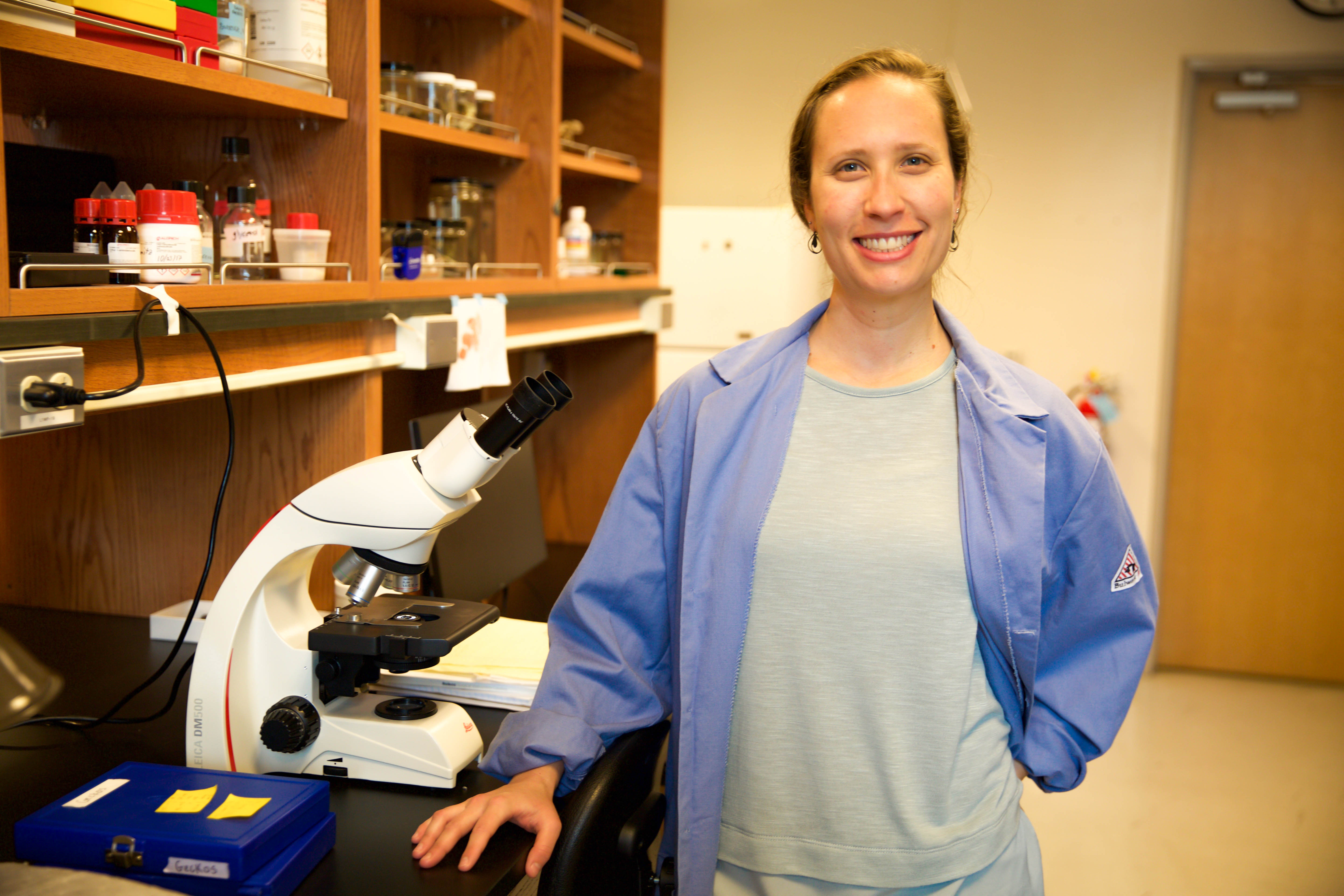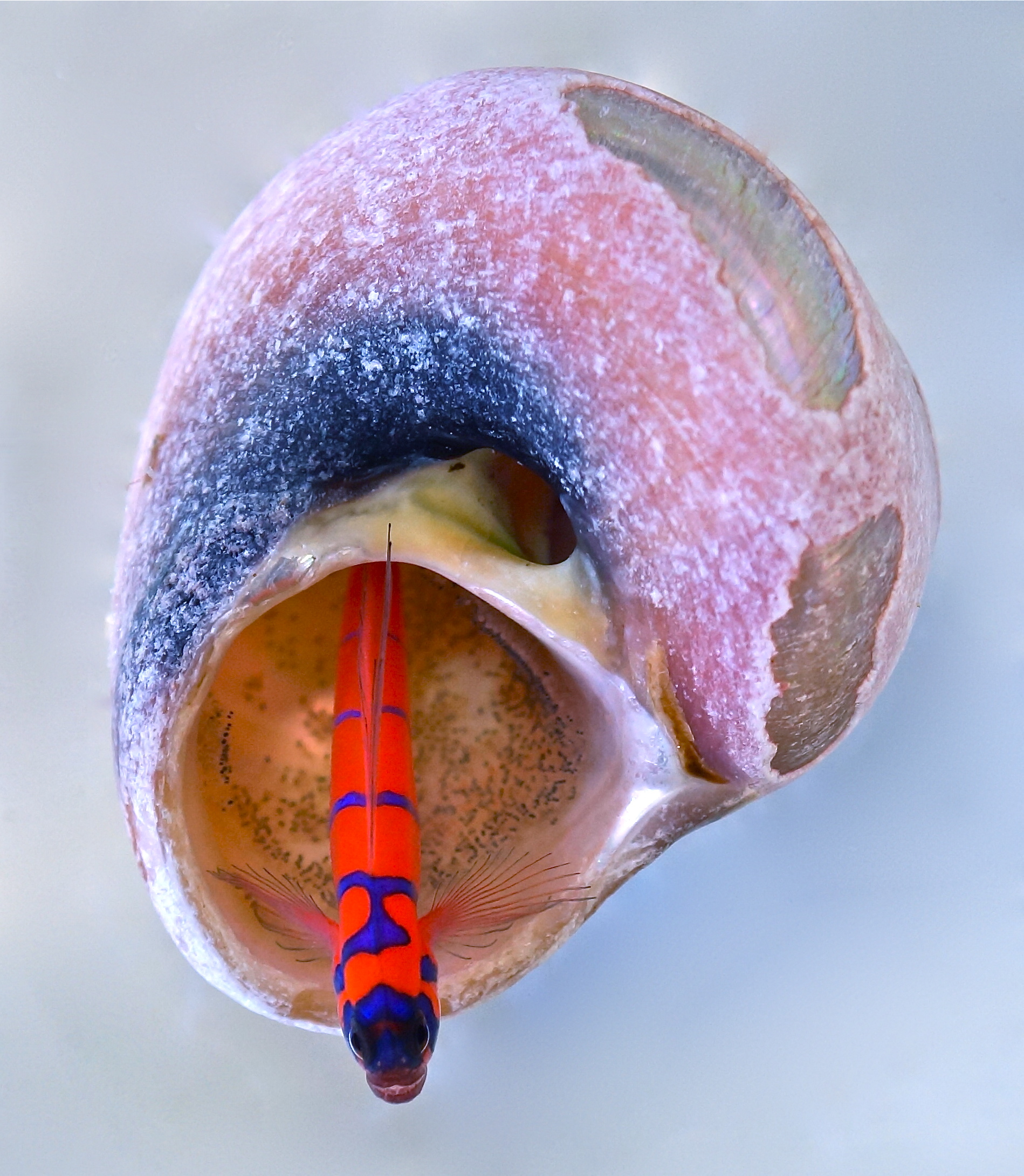
This spring, Tessa-Solomon Lane joined the W.M. Keck Science Department as assistant professor of biology. Solomon-Lane comes to Scripps from the University of Texas at Austin and will be teaching Systems Neuroscience and a Foundations of Neuroscience lab. Her lab at Keck is an integrative neuroscience and behavior lab that studies the causes and consequences of social behavior. We got together with Solomon-Lane to talk about her research, diversity in science, and her stint as a circus performer.
SC: What does your research focus on?
TSL: In my lab, we will study the behavior, brain, hormones, and experiences of a highly social species of cichlid fish to understand the causes and consequences of social behavior. I’m fascinated by behavior, and in my research, I try to understand how and why individuals behave the way that they do. I’m especially interested in social behavior and how it develops as juveniles grow into adults. Social behavior, and the mechanisms that regulate it in the brain, are strikingly similar across diverse animal species, including humans!
SC: What led you to an interest in animal social behavior?
TSL: Starting at a young age, I volunteered in schools for students with special needs, and I noticed a pattern: Despite a wide variety of learning and developmental differences, the kids who could interact socially with other students and adults had a particular advantage. Social skills are highly valued and valuable, and I began to wonder about the origins of individual differences. The question of why some individuals navigate the social landscape better than others still guides my research today. I study social fish because of the fascinating, complex social communities they form, and they are far easier to study than humans! I also love the water and couldn’t pass on the opportunity to scuba dive as a part of my research.
SC: But not just any fish: You have a particular interest in the bluebanded goby (Lythrypnus dalli), a sex-changing fish with some pretty interesting behavior. Can you tell us a bit about your work with the goby?
TSL: There are many amazing species of social fish, and I’ve been lucky to work with two great ones: an African cichlid called Burton’s mouthbrooder and a sex-changing fish called the bluebanded goby. Both species form social hierarchies with dominant and subordinate individuals. For the goby, status actually dictates whether the fish is male or female! The same individual can change from female to male and back again. It’s really phenomenal. Male cichlids are also socially and reproductively flexible, but not to the same degree: they transition between dominant and reproductive to subordinate and non-reproductive, but males stay males. Both species show just how strong of an impact social behavior and decisions can have.
I am working to set up a breeding population of cichlids in the lab, and they will be the focus of student research as I get started. However, I do plan to study gobies again. They are found nearby, off the coast of Catalina Island, so in the future students will be able to scuba dive with me to collect and study the gobies. Students will be involved in all aspects of this research, from designing projects, carrying out the experiments, collecting and analyzing data, and writing the findings for publication.

SC: What’s been one of your favorite “Eureka!” moments from the lab?
TSL: Figuring out how to measure female goby reproduction was one of my biggest science hurdles. Females can lay 2,000 eggs at a time, and all the females in a social group lay eggs in the same nest. There was no way to tell who laid which eggs. It turns out the solution was food coloring! When injected, the dye marks the eggs in the fish’s ovary. When the female lays her eggs, they have colored yolks! It’s beautiful. I tried many fancier, more scientific dyes, but it was the $2 kitchen solution that ultimately worked.
SC: You’ve spoken a lot about diversity as critical to scientific progress. Tell us more.
TSL: There is so much to say about how science as an institution, and scientists within that institution, have consciously and unconsciously excluded or forced people out based on their identities. This is unquestionably wrong, and it absolutely hinders scientific progress. Science is about making unique observations, asking novel questions, finding creative ways to answer those questions, and innovative solutions when something inevitably goes wrong. And although we think of data analysis and science writing as objective, as humans, we introduce bias and perspective as we seek to understand our findings and develop a narrative to share those findings with others. Diversity, of all kinds—including engaging with non-scientists—benefits every step of the scientific process.
SC: Is there anything about you that might surprise the Scripps community to know?
TSL: Don’t tell the other animal researchers, but I love plants. My house is full of plants, many that I’ve had for years and years. One of my favorite hobbies is graphic design and stenciling (t-shirts, glass etching, etcetera), and I used to be a fire juggler in a circus group.

